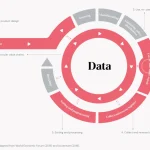
Industry specific business management challenges and solutions can be highly variable depending on the nature of your company. No matter if it’s small or large scale, identifying and resolving these challenges as quickly as possible is of critical importance for success.
Tailored solutions help streamline workflows and processes for increased productivity. In addition, tailored solutions provide essential compliance tools in highly regulated industries like healthcare and finance.
Cost-effectiveness
Cost-effectiveness is an integral component of business management for organizations seeking to achieve growth through cost-cutting investments. It involves balancing potential returns with associated costs when taking action on any given path or course of action. Cost-benefit analyses can often help achieve this objective, outlining potential financial gains from any decision and subtracting associated costs. Cost-effective data teams need to be mindful of the costs involved with their work, which they can achieve by optimizing resource utilization, making smart investments in tools and infrastructure, prioritizing high return projects, as well as encouraging transparency and accountability within spending decisions – this will allow the team to meet its objectives while staying within its budget.
Flexibility
Flexibility in the workplace has become an increasingly important feature, and many companies are turning to it to attract and retain employees. Flexibility encompasses everything from remote work and job sharing arrangements, to flexible dress codes and PTO policies. Although not every company can fully adopt these changes, most can make significant differences by making even minor modifications that have a dramatic effect on workplace culture.
Before implementing any flexibility options, it is crucial that you gather feedback from your team. See which options they prefer and identify any challenges they face – this information can help create processes that are accurate and efficient, especially for employees working remotely or near offices. Furthermore, ensure all relevant data is easily available so everyone has equal chances at succeeding – this is essential for any thriving business.
Adaptability
Adaptability is one of the most sought-after soft skills in today’s work world, helping both individuals and organizations navigate an ever-evolving environment–from technological innovations to economic turmoil. Candidates possessing this trait can quickly react to shifting circumstances by taking proactive steps to resolve them; furthermore, they’re open to learning new technologies and team dynamics while encouraging a culture of constant development within an organization.
Adaptability offers a more holistic solution for handling change than its reactive counterpart, flexibility. It encompasses various factors including business operations, organizational restructuring and unexpected situations requiring adaptation.
Assessing adaptability requires a multifaceted evaluation process, from behavioral interviews to structured tests. Alooba offers a complete library of tests such as multiple-choice exams and problem solving evaluations that measure adaptability and can help your business identify candidates with the necessary mindset and abilities for its unique requirements.
Scalability
Scalability is a fundamental element of business expansion. Without it, companies risk experiencing performance issues or downtime due to an increase in workload or user demand. This may be caused by hardware or software limitations, mismatched operating systems, or simply an absence of stress testing.
One effective strategy to increase scalability is through process automation, or “robotics”, which involves using technology tools to reduce manual tasks and enable employees to perform more efficiently. Companies should take caution when investing in this form of technology as too much automation may reduce efficiency and limit scalability.
Businesses should also explore horizontal scalability, which involves upgrading existing hardware components to support increased workloads. This option tends to be more cost-effective and efficient than purchasing new hardware; additionally, this strategy works well when workload demands cannot be accurately predicted; but careful planning and execution must take place for this approach to work effectively. To ensure compatibility of any new systems with existing ones.








